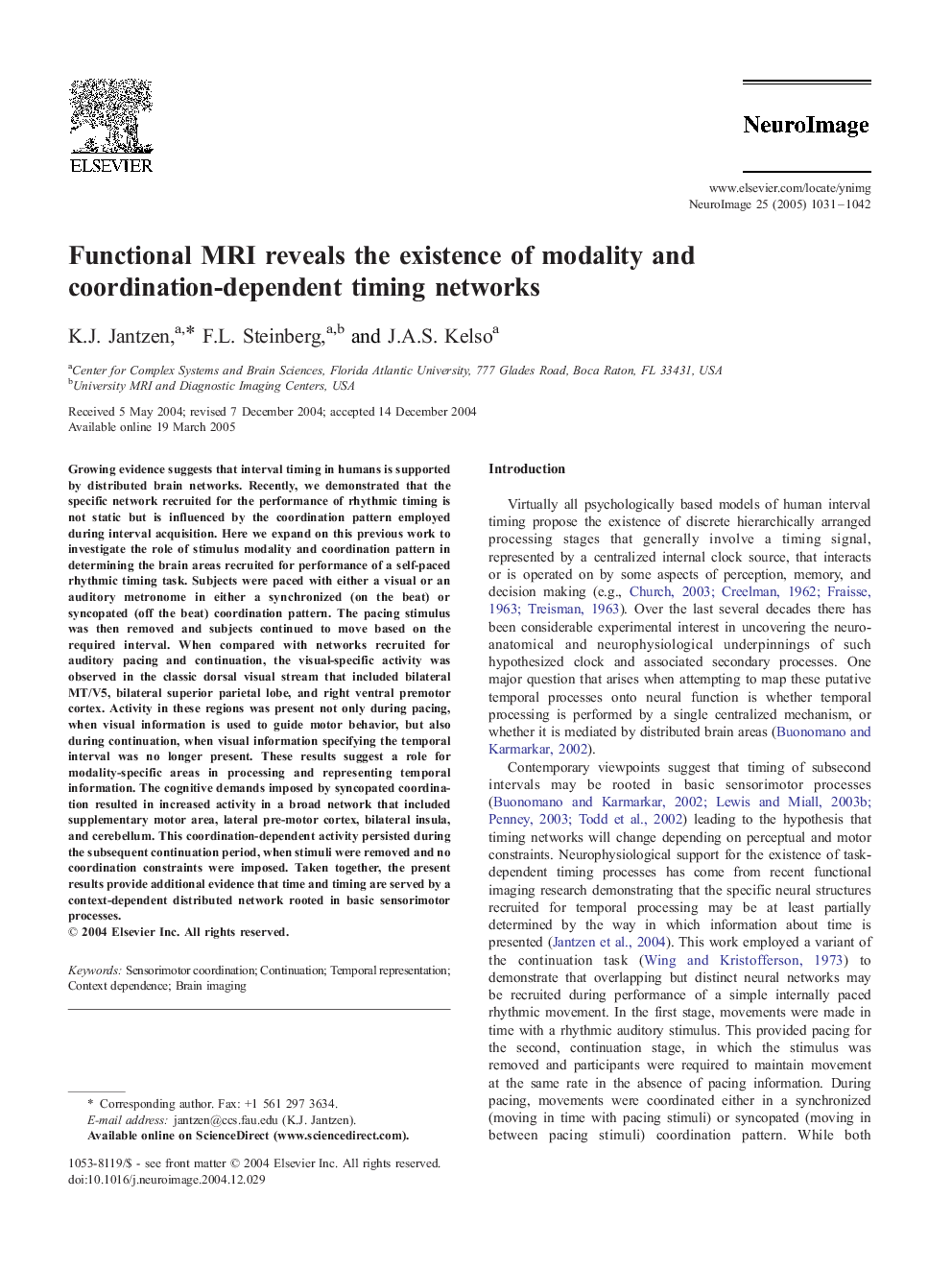| Article ID | Journal | Published Year | Pages | File Type |
|---|---|---|---|---|
| 9198033 | NeuroImage | 2005 | 12 Pages |
Abstract
Growing evidence suggests that interval timing in humans is supported by distributed brain networks. Recently, we demonstrated that the specific network recruited for the performance of rhythmic timing is not static but is influenced by the coordination pattern employed during interval acquisition. Here we expand on this previous work to investigate the role of stimulus modality and coordination pattern in determining the brain areas recruited for performance of a self-paced rhythmic timing task. Subjects were paced with either a visual or an auditory metronome in either a synchronized (on the beat) or syncopated (off the beat) coordination pattern. The pacing stimulus was then removed and subjects continued to move based on the required interval. When compared with networks recruited for auditory pacing and continuation, the visual-specific activity was observed in the classic dorsal visual stream that included bilateral MT/V5, bilateral superior parietal lobe, and right ventral premotor cortex. Activity in these regions was present not only during pacing, when visual information is used to guide motor behavior, but also during continuation, when visual information specifying the temporal interval was no longer present. These results suggest a role for modality-specific areas in processing and representing temporal information. The cognitive demands imposed by syncopated coordination resulted in increased activity in a broad network that included supplementary motor area, lateral pre-motor cortex, bilateral insula, and cerebellum. This coordination-dependent activity persisted during the subsequent continuation period, when stimuli were removed and no coordination constraints were imposed. Taken together, the present results provide additional evidence that time and timing are served by a context-dependent distributed network rooted in basic sensorimotor processes.
Keywords
Related Topics
Life Sciences
Neuroscience
Cognitive Neuroscience
Authors
K.J. Jantzen, F.L. Steinberg, J.A.S. Kelso,
